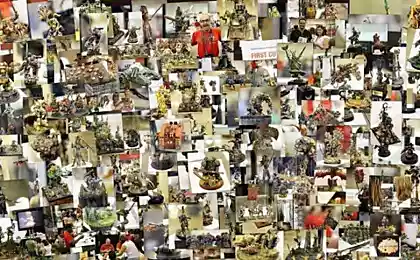780
Far space in May 2013
Will be 19 photos and a brief description.
It focuses on the most interesting photos of the distant and not very much space in May 2013.
source
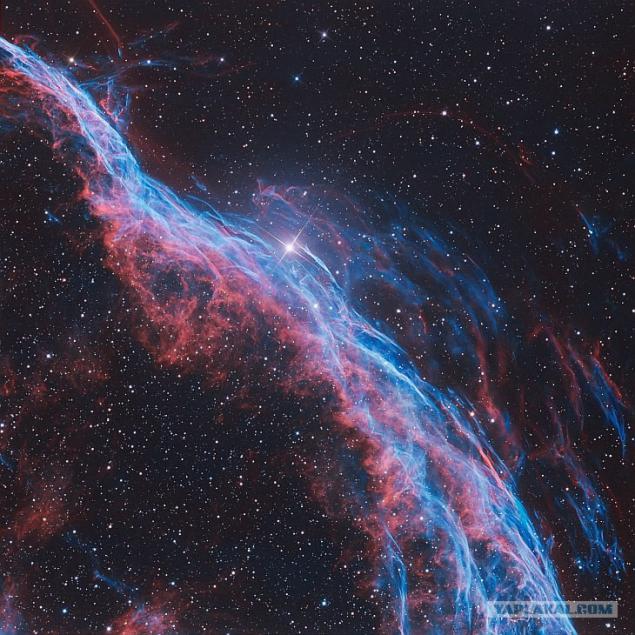
1.Nochnaya Earth
Right - New York City and Long Island. They are pulled to the left lane of the lights, to Philadelphia, Baltimore and Washington in the center of the image. On the left, also seen spacecraft "Soyuz".
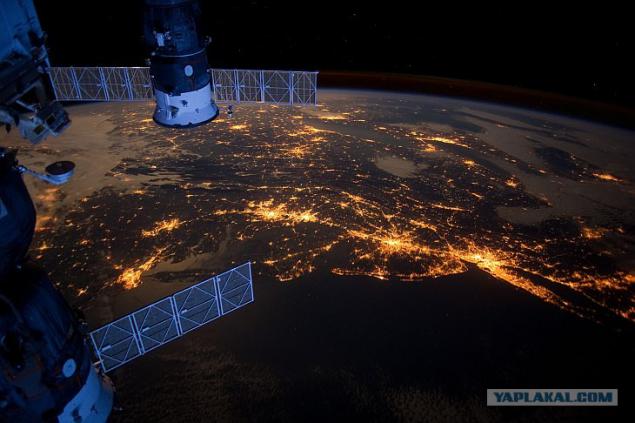
2.Vspyshka the Sun
In mid-April the sun is so far the most powerful in 2013 solar flare accompanied by a coronal mass ejection directed towards the Earth
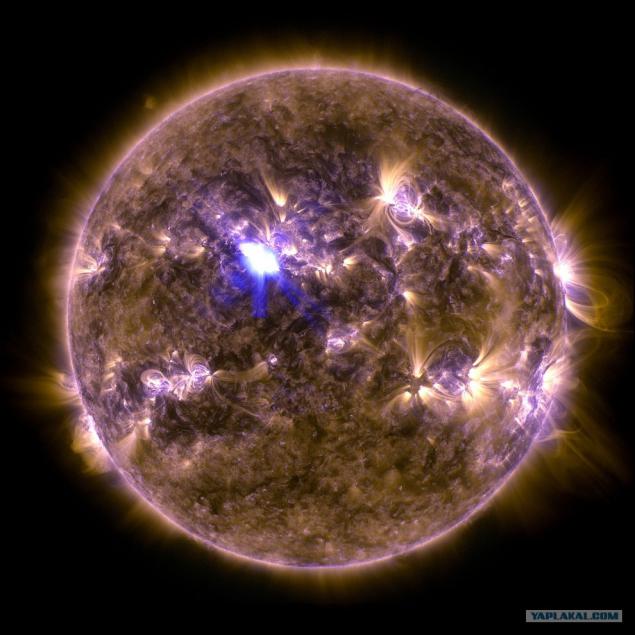
3.Emissionnaya Soul Nebula
The Soul Queen of Ethiopia stars are born. The soul of an emission nebula (IC 1848), located at a distance of about 6500 light-years away - home to several star clusters.
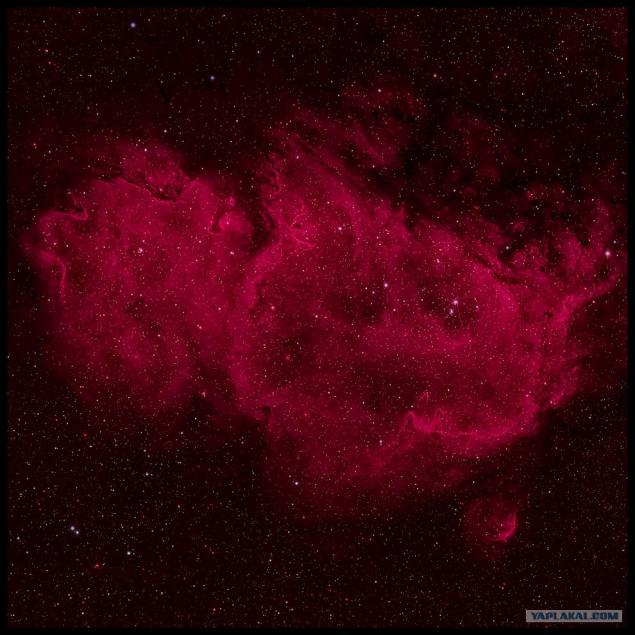
4.Spiralnaya Galaxy Bode
Spiral galaxy M81 Bode is located in the constellation Ursa Major. M81 - an example of the structure of a spiral galaxy, with near perfect sleeves that extend almost to the center. It was first discovered by Johann Bode in 1774. This is one of the brightest galaxies in Earth's sky. In size it is similar to our own Milky Way and lies 11.8 million light-years from Earth.
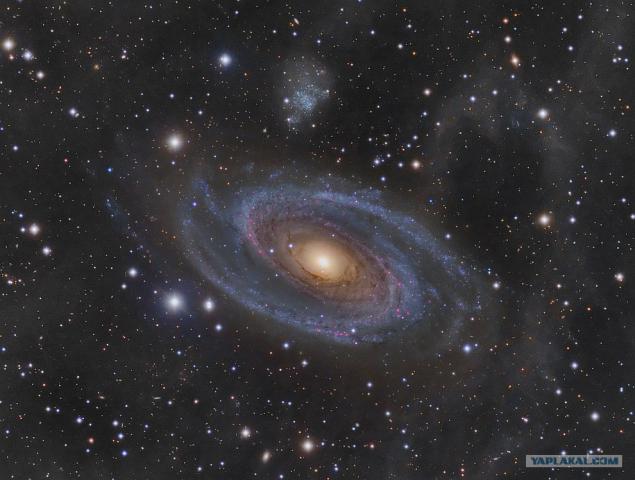
5.Zvezdnaya factory Messier 17
Established stellar winds and radiation from hot, massive stars, the star factory is located 5500 light-years away in the constellation Sagittarius.
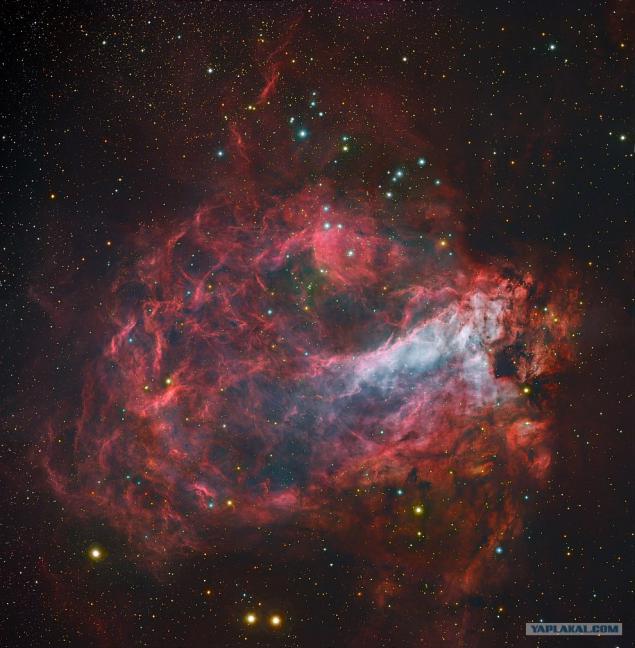
6.Tumannost NGC 1788 and Moustache Witch
This cosmic landscape, consisting of interstellar gas and dust, located on the edge of the Orion Nebula. He bluish "chin" Witch Head Nebula (top left corner) reflects the light of the bright star Rigel in Orion, or beta. Many reflection nebula NGC 1788 appears similar to the space bat, which is very suitable to its environment.
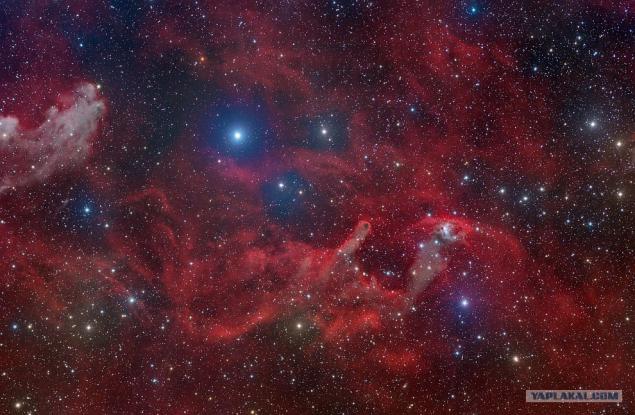
7.Tumannost Horsehead
Journey through gorgeous cloud of interstellar space has been exposed to the effects of stellar winds and radiation, and has taken a very recognizable shape. This Horsehead Nebula is part of the Orion Nebula (M42). Located at a distance of about 1500 light-years away
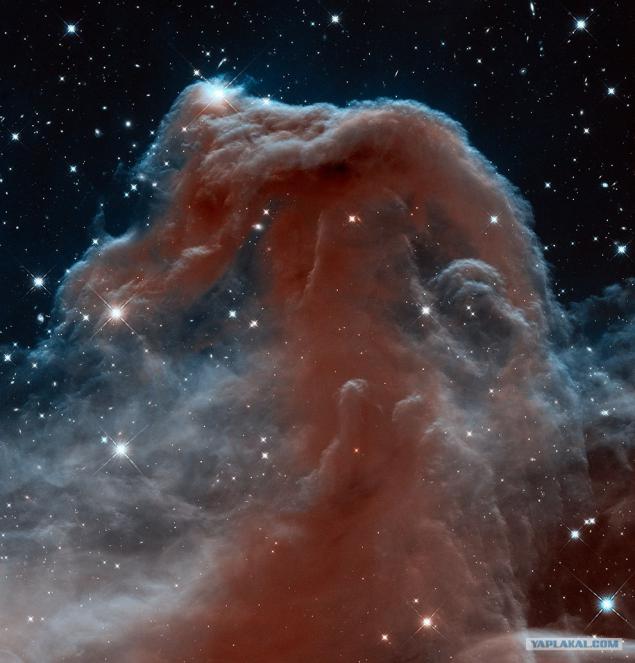
8.Ostatki supernova
This fluffy ball - in fact, the rest of the brightest in the history of mankind supernova. It has a size of about 60 light years and is the residue of exploded white dwarf. The compact white dwarf gradually captured material companion star, increasing the mass and led to a thermonuclear explosion, tearing the dwarf apart. Because of the distance to the supernova remnant is about 7000 light-years away, the explosion itself occurred over 7000 years before the light reached Earth from him in 1006.
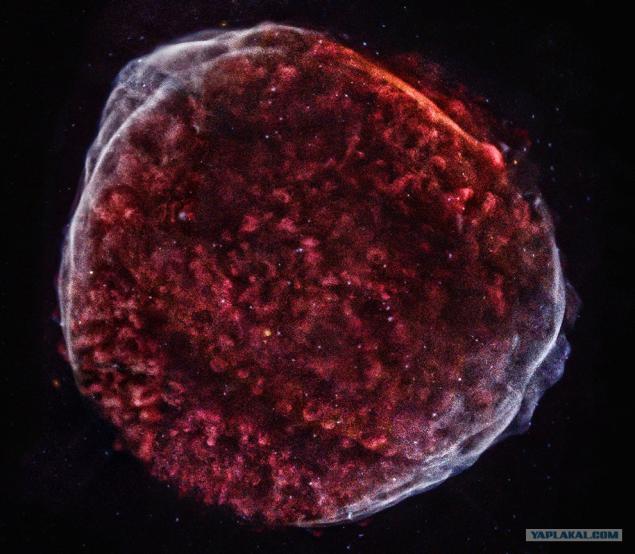
9.Uragan Saturn
In late April-early May, the most powerful hurricane on record for solar system raged on Saturn. Impressive images of this cosmic phenomenon managed to make the spacecraft Cassini-Huygens mission. This hurricane, a diameter of about 300 km, covering the north pole of Saturn is equal to half the area of Australia. Clouds on the edge of moving at a speed exceeding 500 km / h.

10.Omega Centauri - the brightest globular cluster
This huge ball of stars appeared before our sun. Long before dinosaurs roamed the Earth, and even before our planet was formed in general, there was compression of the ancient star clusters, and they revolve around a young Milky Way Galaxy. Of the roughly 200 globular clusters, which have survived to the present, Omega Centauri is the largest: it consists of more than 10 million stars. In addition Omega Centauri - it is the brightest globular cluster
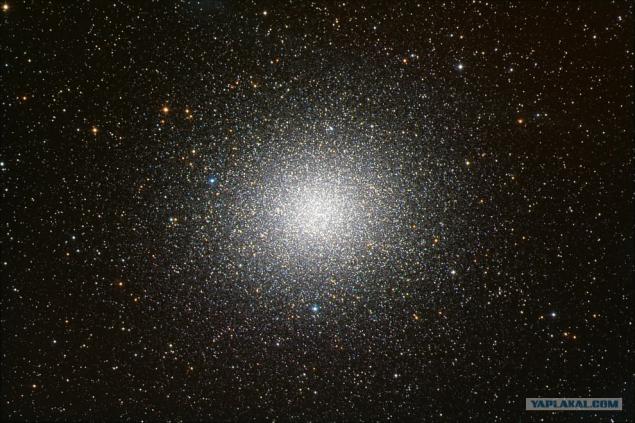
11.Konskaya head: a wide angle view of
In the distance to the nebula Horsehead is 1 600 light years, the field of view is over 10 light-years. In this image, the Horsehead Nebula, known as Barnard 33, located at the top left.
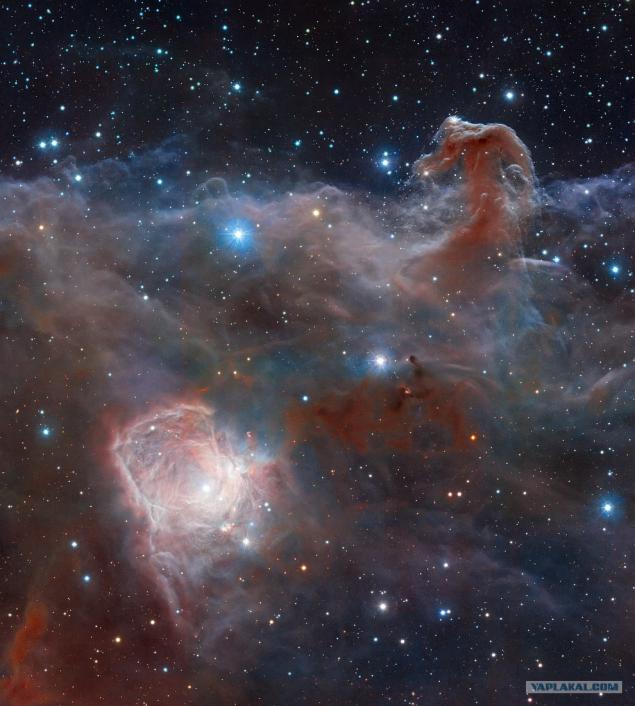
12.Luna, Venus, clouds and birds
This photo was taken in Spain. Here, on a dark blue night sky pose a month and Venus. Black dots on a background of clouds luxury - it is a flock of birds flying past
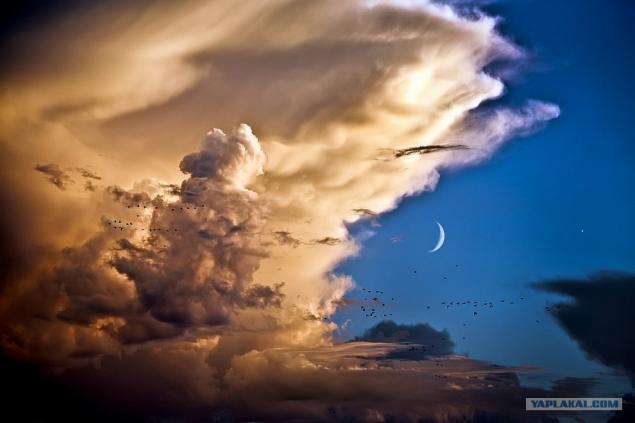
13.Koltso fire
May 10, 2013 in Australia and the southern part of the Pacific Ocean was one of the most unusual astronomical phenomena - "Ring of Fire" - so beautifully styled the first in this year's solar eclipse. In the morning local time, the moon covered 95% of the solar disk: there was only a red-orange line. The next time you see a similar phenomenon can be only 22 years later.
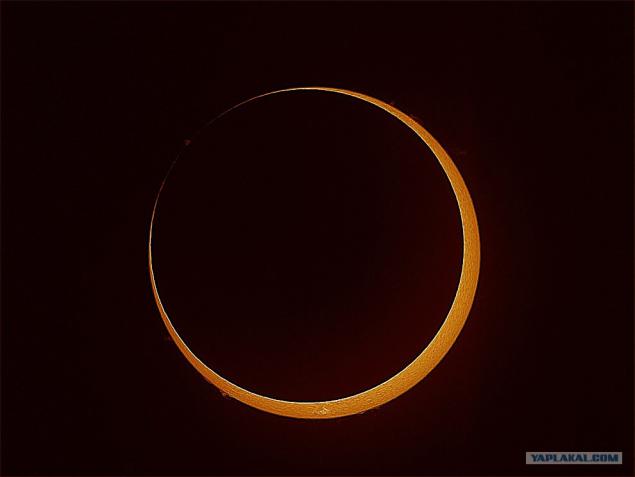
14.M 77 - a galaxy in the constellation Keith
Spiral galaxy M77 is located at a distance of 47 million light years from Earth. Its diameter is about 100 000 light years. The spiral arms are twisted to the core of the galaxy.
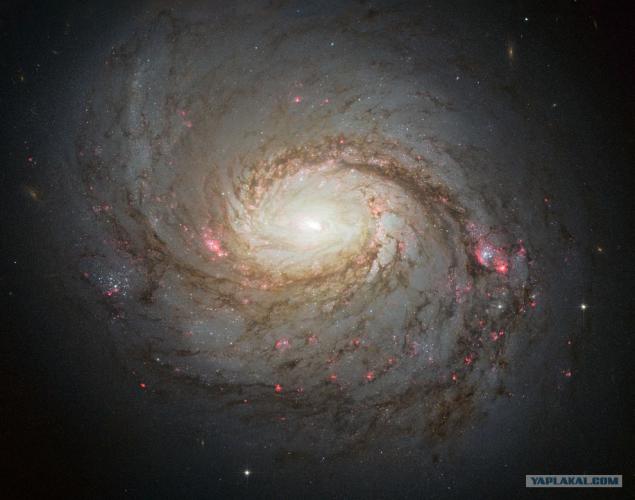
15.Vzryvy on a blue sun
Our Sun can be photographed so that it will be similar to blueberries. To do this, you need to remove it in harsh ultraviolet rays, and then invert the colors in the resulting image. And it is not just self-indulgence, this image of the sun has scientific importance because it shows the state of the solar chromosphere (the outer shell of the Sun and other stars thickness of about 10 000 km). In the picture the chromosphere of the Sun has a lot of features: surface texture looks like chapped, cold sunspots look very bright and surrounding active regions - dark. Now the sun has come nearer to the maximum of its 11-year activity cycle.

16.Bolshoe Magellanic Cloud
Portuguese navigator of the 16th century, Ferdinand Magellan and his crew made the first circumnavigation of the world, there is enough time to study the southern sky. As a result, two similar cloud object became known as the Magellanic Clouds. Of course, it is now clear that these star clouds are dwarf galaxies - companions of our huge spiral Milky Way galaxy. Large Magellanic Cloud is located approximately 160,000 light-years from Earth in the constellation Dorado. This is the most massive of all the satellite galaxies of the Milky Way, its size - about 15 000 light-years.
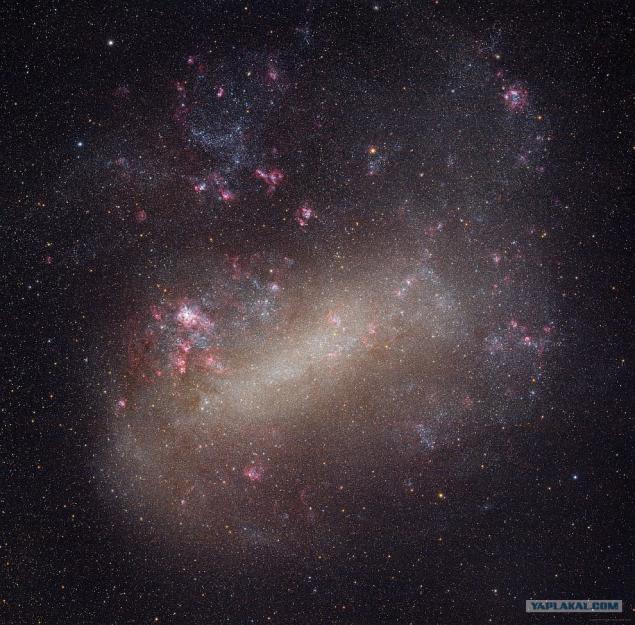
17.Spiralnaya galaxy NGC 4725
The galaxy in the constellation Coma Berenices. While in most spiral galaxies, including our Milky Way, there are two spiral arms, or even more, NGC 4725 is only one. The diameter of NGC 4725 is more than 100 000 light years and lies at a distance of 41 million light years from Earth.
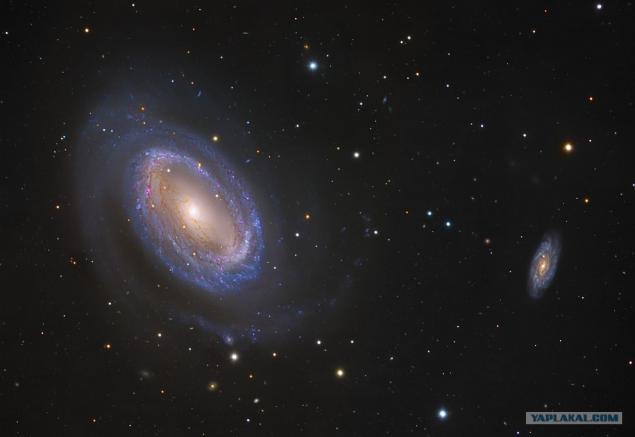
18.Tumannost Eagle and the Swan Nebula
Another beautiful space landscape, this time with the Eagle Nebula (M16) and the Swan Nebula (M17). Eagle is on the left over the center and Swan - at the bottom right.
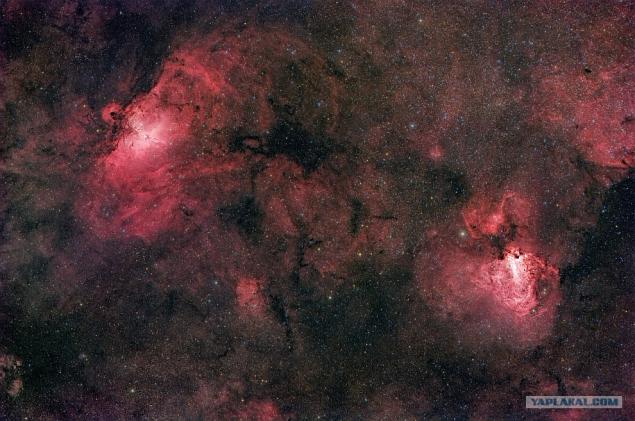
19.Tumannost Witch's Broom
This nebula NGC 6960 - a supernova remnant in the constellation Cygnus. It is part of the Veil Nebula (the west side). Almost in the center is the star 52 Cygni, visible to the naked eye, but it has nothing to do with this ancient nebula. 10,000 years ago, before the birth of the known history of mankind, the Earth in the night sky, a new shining star, which gradually weakened and disappeared within a few weeks. Today we know that it was the light of a supernova explosion and its fragments - a supernova remnant, recorded in the catalog under the name Veil Nebula ...
That's all. Thanks to all.
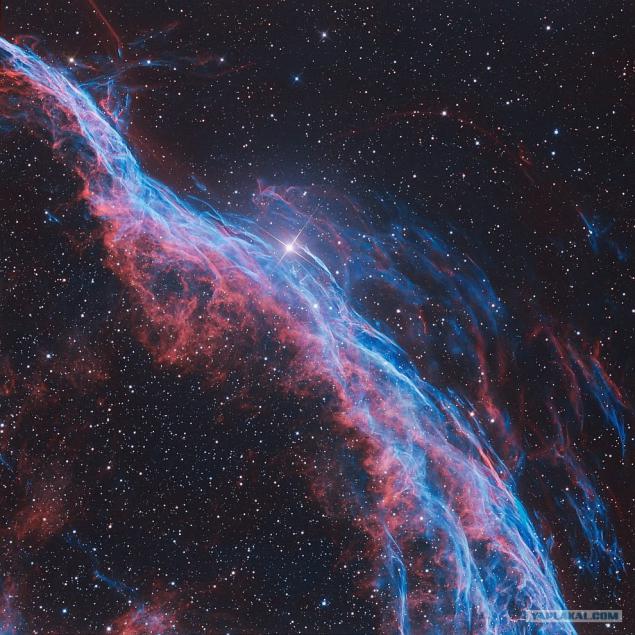
Source:
It focuses on the most interesting photos of the distant and not very much space in May 2013.
source

1.Nochnaya Earth
Right - New York City and Long Island. They are pulled to the left lane of the lights, to Philadelphia, Baltimore and Washington in the center of the image. On the left, also seen spacecraft "Soyuz".

2.Vspyshka the Sun
In mid-April the sun is so far the most powerful in 2013 solar flare accompanied by a coronal mass ejection directed towards the Earth

3.Emissionnaya Soul Nebula
The Soul Queen of Ethiopia stars are born. The soul of an emission nebula (IC 1848), located at a distance of about 6500 light-years away - home to several star clusters.

4.Spiralnaya Galaxy Bode
Spiral galaxy M81 Bode is located in the constellation Ursa Major. M81 - an example of the structure of a spiral galaxy, with near perfect sleeves that extend almost to the center. It was first discovered by Johann Bode in 1774. This is one of the brightest galaxies in Earth's sky. In size it is similar to our own Milky Way and lies 11.8 million light-years from Earth.

5.Zvezdnaya factory Messier 17
Established stellar winds and radiation from hot, massive stars, the star factory is located 5500 light-years away in the constellation Sagittarius.

6.Tumannost NGC 1788 and Moustache Witch
This cosmic landscape, consisting of interstellar gas and dust, located on the edge of the Orion Nebula. He bluish "chin" Witch Head Nebula (top left corner) reflects the light of the bright star Rigel in Orion, or beta. Many reflection nebula NGC 1788 appears similar to the space bat, which is very suitable to its environment.

7.Tumannost Horsehead
Journey through gorgeous cloud of interstellar space has been exposed to the effects of stellar winds and radiation, and has taken a very recognizable shape. This Horsehead Nebula is part of the Orion Nebula (M42). Located at a distance of about 1500 light-years away

8.Ostatki supernova
This fluffy ball - in fact, the rest of the brightest in the history of mankind supernova. It has a size of about 60 light years and is the residue of exploded white dwarf. The compact white dwarf gradually captured material companion star, increasing the mass and led to a thermonuclear explosion, tearing the dwarf apart. Because of the distance to the supernova remnant is about 7000 light-years away, the explosion itself occurred over 7000 years before the light reached Earth from him in 1006.

9.Uragan Saturn
In late April-early May, the most powerful hurricane on record for solar system raged on Saturn. Impressive images of this cosmic phenomenon managed to make the spacecraft Cassini-Huygens mission. This hurricane, a diameter of about 300 km, covering the north pole of Saturn is equal to half the area of Australia. Clouds on the edge of moving at a speed exceeding 500 km / h.

10.Omega Centauri - the brightest globular cluster
This huge ball of stars appeared before our sun. Long before dinosaurs roamed the Earth, and even before our planet was formed in general, there was compression of the ancient star clusters, and they revolve around a young Milky Way Galaxy. Of the roughly 200 globular clusters, which have survived to the present, Omega Centauri is the largest: it consists of more than 10 million stars. In addition Omega Centauri - it is the brightest globular cluster

11.Konskaya head: a wide angle view of
In the distance to the nebula Horsehead is 1 600 light years, the field of view is over 10 light-years. In this image, the Horsehead Nebula, known as Barnard 33, located at the top left.

12.Luna, Venus, clouds and birds
This photo was taken in Spain. Here, on a dark blue night sky pose a month and Venus. Black dots on a background of clouds luxury - it is a flock of birds flying past

13.Koltso fire
May 10, 2013 in Australia and the southern part of the Pacific Ocean was one of the most unusual astronomical phenomena - "Ring of Fire" - so beautifully styled the first in this year's solar eclipse. In the morning local time, the moon covered 95% of the solar disk: there was only a red-orange line. The next time you see a similar phenomenon can be only 22 years later.

14.M 77 - a galaxy in the constellation Keith
Spiral galaxy M77 is located at a distance of 47 million light years from Earth. Its diameter is about 100 000 light years. The spiral arms are twisted to the core of the galaxy.

15.Vzryvy on a blue sun
Our Sun can be photographed so that it will be similar to blueberries. To do this, you need to remove it in harsh ultraviolet rays, and then invert the colors in the resulting image. And it is not just self-indulgence, this image of the sun has scientific importance because it shows the state of the solar chromosphere (the outer shell of the Sun and other stars thickness of about 10 000 km). In the picture the chromosphere of the Sun has a lot of features: surface texture looks like chapped, cold sunspots look very bright and surrounding active regions - dark. Now the sun has come nearer to the maximum of its 11-year activity cycle.

16.Bolshoe Magellanic Cloud
Portuguese navigator of the 16th century, Ferdinand Magellan and his crew made the first circumnavigation of the world, there is enough time to study the southern sky. As a result, two similar cloud object became known as the Magellanic Clouds. Of course, it is now clear that these star clouds are dwarf galaxies - companions of our huge spiral Milky Way galaxy. Large Magellanic Cloud is located approximately 160,000 light-years from Earth in the constellation Dorado. This is the most massive of all the satellite galaxies of the Milky Way, its size - about 15 000 light-years.

17.Spiralnaya galaxy NGC 4725
The galaxy in the constellation Coma Berenices. While in most spiral galaxies, including our Milky Way, there are two spiral arms, or even more, NGC 4725 is only one. The diameter of NGC 4725 is more than 100 000 light years and lies at a distance of 41 million light years from Earth.

18.Tumannost Eagle and the Swan Nebula
Another beautiful space landscape, this time with the Eagle Nebula (M16) and the Swan Nebula (M17). Eagle is on the left over the center and Swan - at the bottom right.

19.Tumannost Witch's Broom
This nebula NGC 6960 - a supernova remnant in the constellation Cygnus. It is part of the Veil Nebula (the west side). Almost in the center is the star 52 Cygni, visible to the naked eye, but it has nothing to do with this ancient nebula. 10,000 years ago, before the birth of the known history of mankind, the Earth in the night sky, a new shining star, which gradually weakened and disappeared within a few weeks. Today we know that it was the light of a supernova explosion and its fragments - a supernova remnant, recorded in the catalog under the name Veil Nebula ...
That's all. Thanks to all.

Source:








